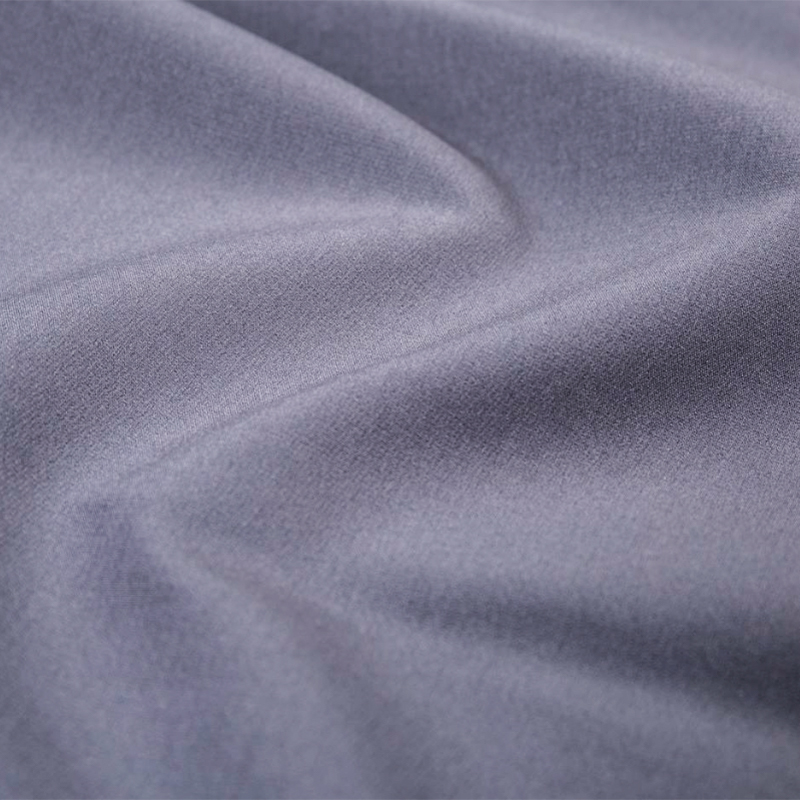The stretchability and recovery of mountain climbing fabrics play a pivotal role in enhancing mobility and overall performance during climbs, particularly in challenging environments such as steep and uneven terrain. Here’s how these factors impact a climber's ability to perform:
Enhanced Flexibility for Movement
Stretchable fabrics, such as those incorporating elastane or spandex, allow climbers to move with greater ease and flexibility. When scaling steep slopes or navigating uneven rocky surfaces, climbers frequently need to bend, stretch, or twist their bodies to maintain balance or reach for holds. Fabrics with 4-way stretch offer significant freedom of movement, allowing climbers to perform dynamic movements—such as high steps or wide lunges—without feeling restricted. This mobility is essential, especially in technical climbs, where precision and agility are key to progress.
Increased Comfort and Reduced Fatigue
Mountain climbing often involves long, strenuous hours of physical activity. Fabrics with good stretchability help reduce the feeling of tightness or restriction in key areas such as the knees, hips, and shoulders. As climbers move through various positions, fabrics that adapt to their body’s shape provide a more comfortable fit, which can reduce muscle fatigue. The ability of the fabric to recover its shape after each movement also ensures that it maintains a snug but flexible fit, enhancing comfort without impeding performance.
Support During High-Impact Movements
During intense climbing movements, such as jumping or lateral reaching, fabrics with good recovery characteristics help maintain the garment’s shape and structure. This is particularly important in high-stretch fabrics used in climbing pants, jackets, and base layers. The recovery of the fabric ensures that, after a stretch, it returns to its original form, maintaining a close fit and preventing sagging or loose areas that could potentially interfere with gear or lead to discomfort. The ability of fabric to quickly return to its shape helps avoid the risk of excessive fabric movement, which could lead to abrasions or hinder climbing efficiency.

Improved Performance on Dynamic Terrain
Climbers often face uneven surfaces with sudden changes in elevation, such as rock scrambling, cliff edges, or loose gravel. Stretch fabrics allow for rapid and dynamic adjustments to changes in terrain without hindering the climber's movement. When climbing over rocks or contorting into unusual positions, the stretchability of the fabric ensures that the climber can reach, bend, or twist freely without being limited by tight or rigid clothing. This adaptability is crucial for climbing success, where precision, agility, and the ability to react quickly to shifting surfaces are required.
Comfort in Extreme Conditions
Stretchable fabrics also help maintain comfort in extreme conditions like cold or wet environments. As climbers move through harsh weather or extreme terrain, they often need to adjust their posture or positioning frequently. Stretch fabrics can provide a layer of warmth while still allowing for fluid movement, and when paired with insulating layers, these fabrics help prevent cold spots and discomfort during extended periods in challenging conditions.
Durability and Performance Over Time
While stretch fabrics are designed to enhance flexibility, their ability to recover after repeated use is just as important. The recovery of the fabric ensures that it remains durable and functional throughout the entire climb, even when subjected to significant strain. Garments with high recovery not only provide longevity but also help maintain the shape and fit, which is critical for maintaining performance in steep and uneven terrain. This ensures that over time, the clothing will continue to offer optimal performance without degrading or losing its flexibility.
.jpg?imageView2/2/format/jp2)
.jpg?imageView2/2/format/jp2)




.jpg?imageView2/2/format/jp2)
_.jpg?imageView2/2/format/jp2)



